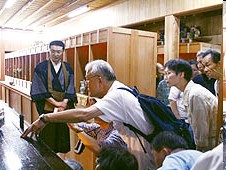 Japanese Buddhist monks hid persecuted Christians in a secret room in their monastery. They then chanted sutras outside to drown out any incriminating noise, Catholics learnt during a Church program.
Japanese Buddhist monks hid persecuted Christians in a secret room in their monastery. They then chanted sutras outside to drown out any incriminating noise, Catholics learnt during a Church program.
Sixty people, led by Father Makoto Onchi of Hagi Catholic Church in Yamaguchi Prefecture, visited the Houonji Buddhist monastery on July 4. The program was part of the church’s annual visit to sites associated with Christian persecution which occurred at various times from the early 1600s.
The monastery had discovered a secret room attached to its main hall, with a tunnel leading out to the fields behind the temple, chief Buddhist monk Venerable Toshiaki Namba told Father Onchi during an interreligious gathering.
The room is believed to have sheltered Christians hiding from religious persecution.
Houonji was built at its present location in 1617. Later, during a persecution in the late 1800’s, Hidden Christians were exiled about 230km to Hagi City from Urakami, Nagasaki.
Venerable Namba told his visitors that while the Christians were praying inside, the monks would chant sutras loudly outside to prevent the sound of their prayers from being heard by anyone else.
The Catholic visitors expressed gratitude to their host for the kindness and generosity of the monks in protecting their predecessors in the faith.
The temple is just one of several Buddhist sites in Japan linked to the early Japanese Christians.
Monuments in honor of persecuted Christians have been erected at Buddhist temples throughout Japan. Catholics also hold memorial ceremonies for these Christians.
Christianity was present in Yamaguchi Prefecture as early as the 16th Century when Saint Francis Xavier visited the area.
The feudal lord at that time supported the fledgling Church but religious persecution started with a change of regime.
Source: Cath News India




